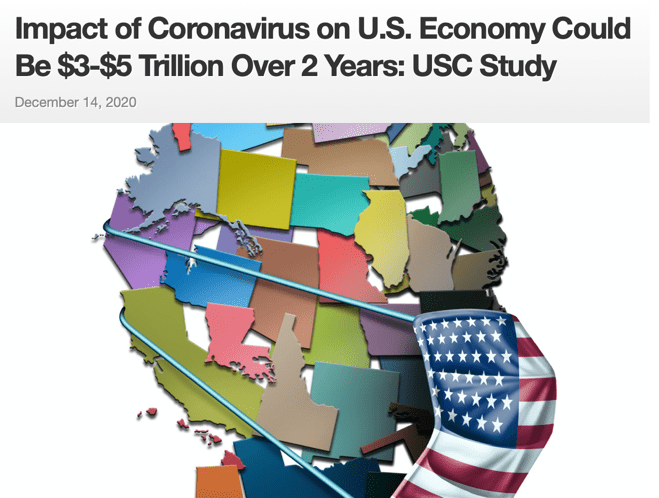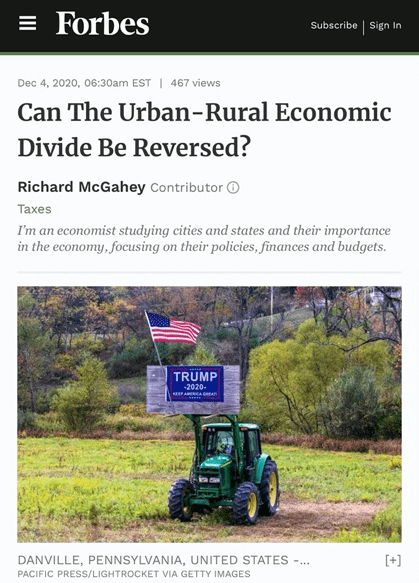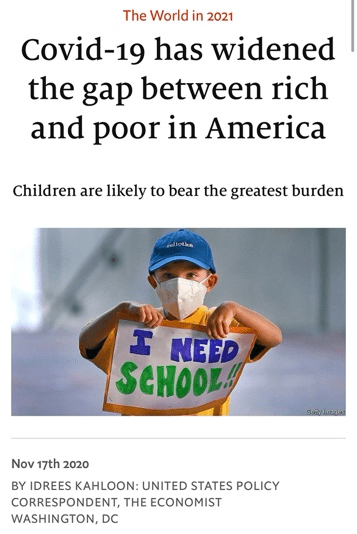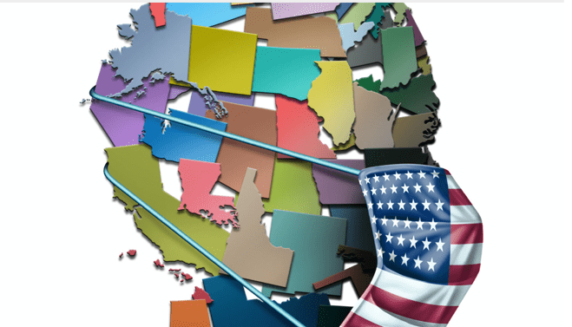A new study from the University of Southern California found that the spread of the novel coronavirus may cause a net loss of $3.2 trillion and up to $4.8 trillion in GDP losses in the next two years. Research shows that the economic impact of the epidemic depends on many factors, including the duration and extent of business restrictions, the speed of resumption of work, infection rate and mortality.
Behind the huge economic losses is the cold reality that the economic gap between urban and rural areas has widened, the gap between rich and poor between different races has widened, and the educational gap between different income groups has widened. The various cracks brought by the epidemic to American society will have a far-reaching impact in the future.

The gap between urban and rural areas in the United States is increasing, presenting a “parallel world”
According to Forbes, for decades, the wealth and population of the United States have been concentrated in cities, and cities have generated much more wealth, innovation, employment and patent programs than rural areas, and this trend shows no sign of slowing down.
Economist Mark Perry said: “The six largest metropolitan areas in the United States (New York, Los Angeles, Chicago, Dallas, Washington, San Francisco) have 24.7% of the economic output in the United States. If they form a separate country, the country will become the third largest economy in the world.”
Economist Jed Colco said that more people in urban areas have college degrees, higher median incomes, and higher workplace growth expectations than rural areas, which are closely related to the booming of the big city economy.
“This gap makes it difficult for urban and rural residents to make it difficult for urban and rural residents to make the current economic situation and policy in the United States. There is a consensus on it. In other words, due to different economic bases, Americans from urban and rural areas are easy to form different world views and may therefore live in a “parallel world”.
Moreover, Forbes pointed out that the economic gap between urban and rural areas in the United States is “systematic”, which means that it is difficult for the government to reverse the economic disadvantages of rural areas through policy adjustment, etc.
Specifically, the relatively refined occupational division of labor in cities can promote industrial innovation and create more jobs, so it attracts a diversified and highly educated labor force more than rural areas. Over time, these labor forces will further drive the growth and innovation of cities and create a virtuous circle. Conversely, rural areas face a vicious circle of brain drain and slow innovation.
In addition, American cities tend to have more resources and support from capital, law, government, and other systems than rural areas. With the “stronger stronger” effect caused by the outbreak, the economic gap between urban and rural areas will be further widened in the next few years due to scientific and technological innovation, consumer resource aggregation, skilled workers concentration, and talent growth.
Forbes believes that this will undoubtedly lead to the anger and dissatisfaction of rural residents, which in turn will intensify the contradictions between urban and rural areas and intensify political and social antagonism.

The epidemic has exacerbated ethnic polarization, and vulnerable groups may be the most harmed.
According to research data from the Brookings Institution, an American think tank, a single white American man under the age of 35 has an average wealth of 224 times that of a single African-American woman of the same age. Since the outbreak of the epidemic, although African-American families account for 13% of the total population of the United States, they have only 4% of the total wealth of American families. In contrast, white families, who make up 60% of the total population of the United States, have up to 84% of their family wealth.
Although racial inequality in the United States is well known, this year’s special situation is that the epidemic has further exacerbated the gap between the rich and poor between races in the United States.
Various statistics generally show that the highly educated white group is the least likely to lose their jobs during the epidemic, and most of them have long been freed from the economic blow of the epidemic; however, vulnerable groups such as people of color, low-income people, women and less educated workers are in the epidemic. He suffered a heavy blow and has not recovered so far.
Kristin Brody, a fellow at the Brookings Institution, explains why groups of African descent are struggling to recover quickly from the pandemic. She said: “White families tend to inherit more and more frequently. In addition, they are more likely to own ownership of the house, and their house is often more valuable.
With African Americans having very few fixed assets, they will take longer to recover from the economic blow of the pandemic.” Because of these factors, Brody said that the epidemic has further exacerbated the gap between rich and poor between races in the United States.
According to a survey jointly sponsored by the Harvard School of Public Health and the Robert Wood Johnson Foundation, 86% of Hispanic families and 66% of African-American families with children encountered serious financial problems during the epidemic, including insufficient savings, credit card overdraft, and difficulty in spending.
Pay for medical expenses, etc. The proportion of white families who also have these problems is only 51%. As Federal Reserve Chairman Powell said, “The difficulties caused by the epidemic do not fall equally on everyone. The most vulnerable groups are the most hurt people.”

Educational inequality triggers a chain reaction that may tear American society apart even more.
Another notable phenomenon, the Economist notes, is that the pandemic has further exacerbated educational inequality in the United States. Nowadays, more and more students need to learn remotely through the Internet and electronic equipment, but many poor families do not have the money to provide equipment for their children.
An investigation by McKinsey Consulting found that even if American schools can resume offline courses in January 2021, each student will lose at least seven months of study time on average, while African-American students will lose 10 months.
In addition, the instability of the network in rural families can also have an impact on students’ learning. Many parents in rural areas have complained that broadband signals at home are always intermittent, sometimes available, sometimes not available, which may be because everyone is using the same server during the epidemic.
“Now people are all quarantined at home, and the internet is getting slower, especially when kids are taking classes remotely,” said Brian O’Hope, a rural Colorado resident.
O’Hope’s son also said that he was often unable to finish his homework on time because of the slow and unstable Internet speed. Situations like the Ohope family are widespread in rural and remote areas, leaving the children of these families at an academic disadvantage and even less able to compete with children from urban and rich families.
The analysis believes that because education is closely related to future occupations and wealth, education inequality will lead to the stagnation of social mobility and further strengthen the “stronger” effect.
In this sense, the educational differentiation in the United States will sow the seeds for further tearing of American society in the future.



